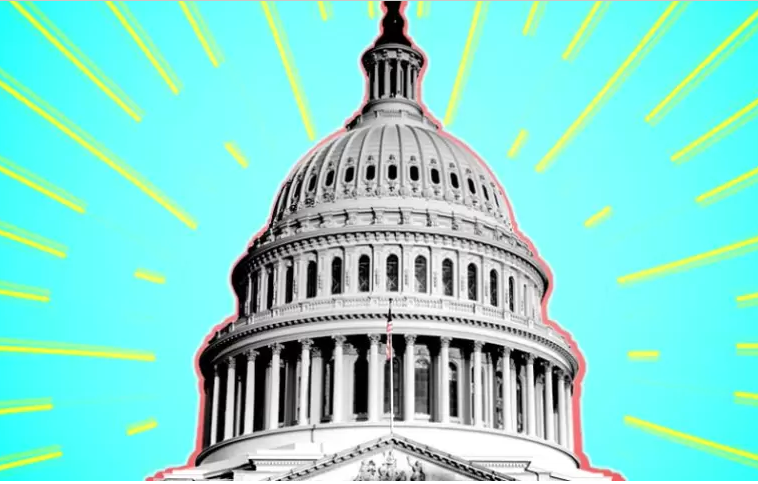
The Week - News
The Week's news section has a Lean Left bias. AllSides provides a separate media bias rating for The Week's Opinion section.
June 2021 Independent Review: The Week Moved to Lean Left
AllSides moved The Week's media bias rating from Center to Lean Left in June 2021 following an independent review by AllSides editors.
Jan. 2020 Independent Review
In January 2020, AllSides decided to split the bias rating for The Week into two following an independent review by members of the AllSides team that found the bias of The Week's opinion section differs significantly from its news section.
AllSides rates the bias of online content only; our ratings do not apply to print, radio, video, or TV content.
In its news articles, The Week frequently offers both the left and right perspective and is relatively balanced.
The bias of The Week's opinion and commentary section leans left overall. Notably, the Week's news portion is much more easily found in its print magazine than online; The Week's homepage features mostly commentary, giving its homepage a Lean Left bent.
AllSides initially rated The Week - News bias as Lean Left, but following an AllSides independent review in July 2019 in which we analyzed changes made by The Week, we changed its bias to Center.
The Week describes itself as a source helping readers to understand "all the issues, from all angles." The Week began with a print magazine 20 years ago, and now includes digital editions. The Week claims it is "designed for readers who want to know what's going on in the world, but don’t have the time to read a daily newspaper from cover to cover - let alone all of them."
As of April 2017, a majority of the 1,700 AllSides users who voted agreed with a bias rating of Center. However, at the same time, over 800 community members disagreed. A follow-up survey of those who disagreed revealed survey participants gave the magazine an average bias rating of 60.8. This rating is on the edge between Center and Lean Left biases, but is not enough evidence to change The Week's rating at this point.
About The Week
The Week is a weekly British news magazine founded in 1995 by Jolyon Connell, formerly of the right-of center Sunday Telegraph. Its main focus is news and commentary pertaining to important world events, as well as science, business and the arts. Designed with the goal of informing readers who want to know what is going on in the world but do not have the time to read a daily newspaper, the magazine is printed in both the United Kingdom and the United States. It also includes digital editions, with weekly apps and a website that publishes distinctive online stories throughout the week.
Since late February, Congress and President Trump have passed three bills in response to the coronavirus pandemic: A modest $8.3 billion investment in the public health response, then about $100 billion to beef up food stamps, state Medicaid budgets, unemployment benefits, and provide some limited paid leave. The third package, the CARES Act, was a whopping $2.2 trillion in aid that threw gobs of money at American households and businesses alike.
Now Congress is discussing a fourth bill — "CARES 2" as House Speaker Nancy Pelosi (D-Cali.) is calling it — that could "easily" clear $1 trillion. This is good news: As gargantuan as the third phase was, it's already proving itself to be grossly inadequate. And the ideas both parties are throwing out for the fourth iteration are surprisingly reasonable. Up to a point, anyway.
As of Monday, Democrats were pushing for a number of items: A further increase in unemployment benefits and more direct cash aid to American households. There weren't hard numbers yet, but those policies will need to be in the hundreds of billions. Democrats are also looking at about $250 billion to help out budgets for smaller city and town governments. These measures would all repeat aspects of the CARES Act, which sent a one-time payment of $1,200 to millions of Americans, added an additional $600 per week to unemployment benefits for the next four months (while opening unemployment benefits up to gig workers and independent contractors) and gave $130 billion to hospital systems as well as $150 billion for state and local budgets.
The thing is, the crisis has come so hard and fast that these moves, as admirable as they were, are already inadequate. Between March 14 and 28, almost 10 million Americans filed for jobless claims. State unemployment insurance systems have been overwhelmed, and former Federal Reserve Chair Janet Yellen reportedly told Pelosi the true unemployment rate (that government statistics just haven't caught up to yet) is likely 13 percent — higher than the Great Recession's peak of 10 percent. State and local budgets, which cannot deficit spend the way the federal government can, are already looking at massive spending cuts to offset the tax revenue losses. A one-time cash stipend will not be enough — it will need to be repeated several times — and America's unemployment insurance systems will need to provide more help longer as well. As for state and local governments, they spend about $3.7 trillion a year in total, so a $400 billion infusion between the two packages seems like the bare minimum.











